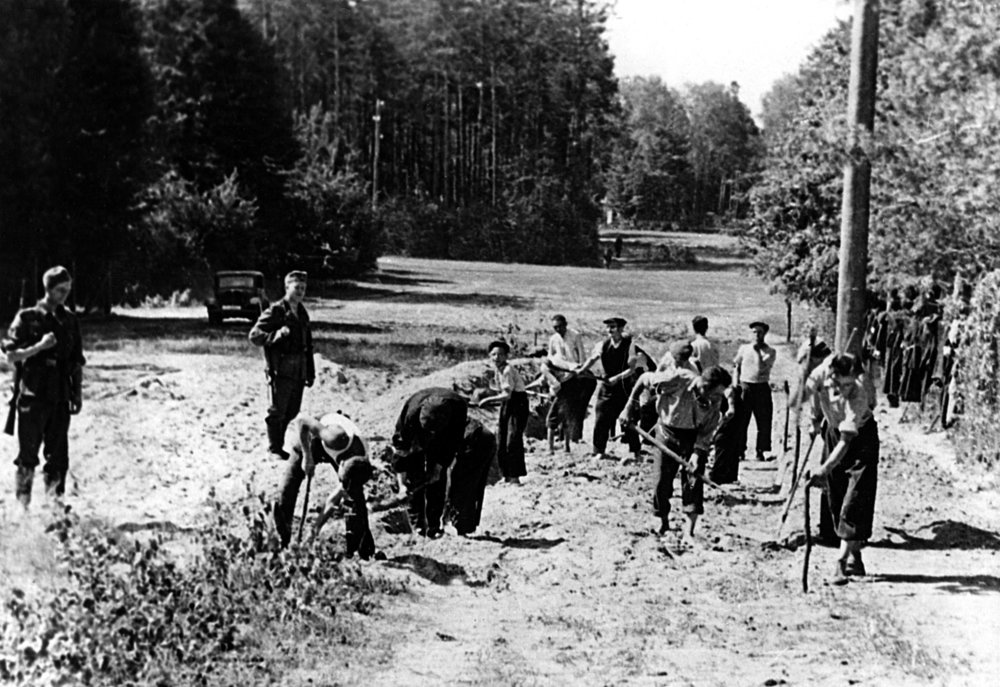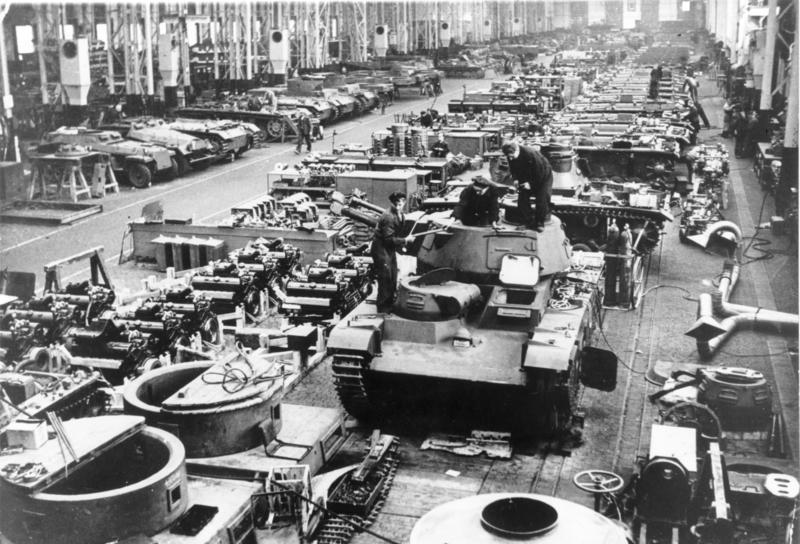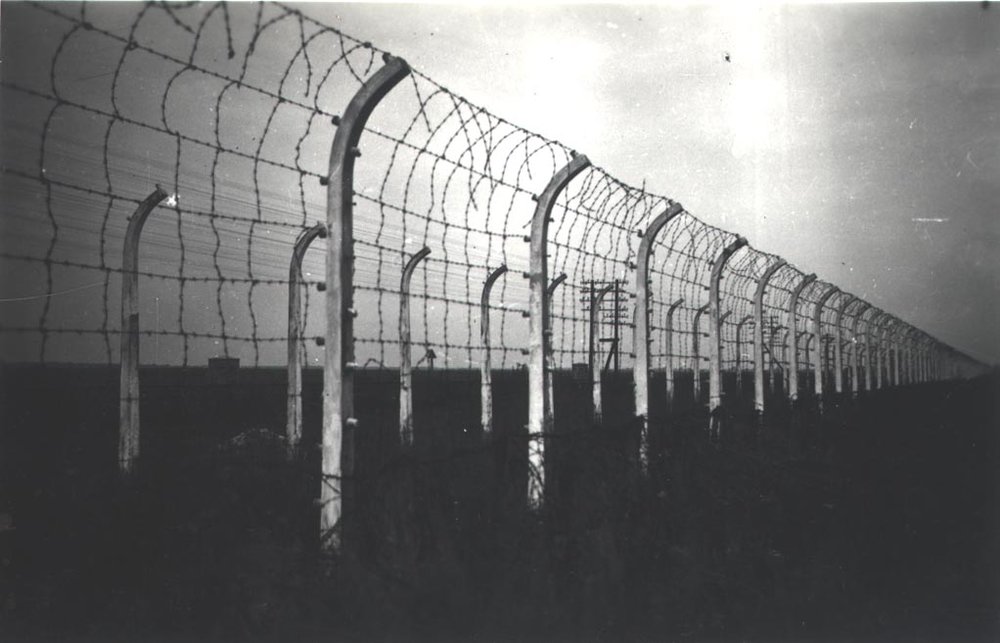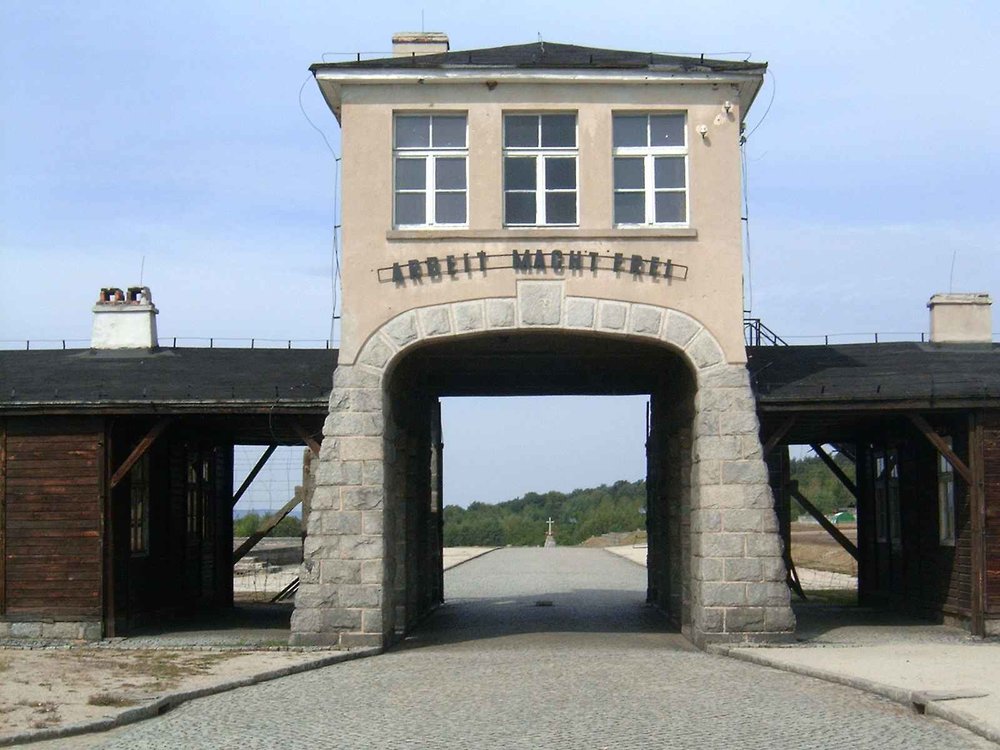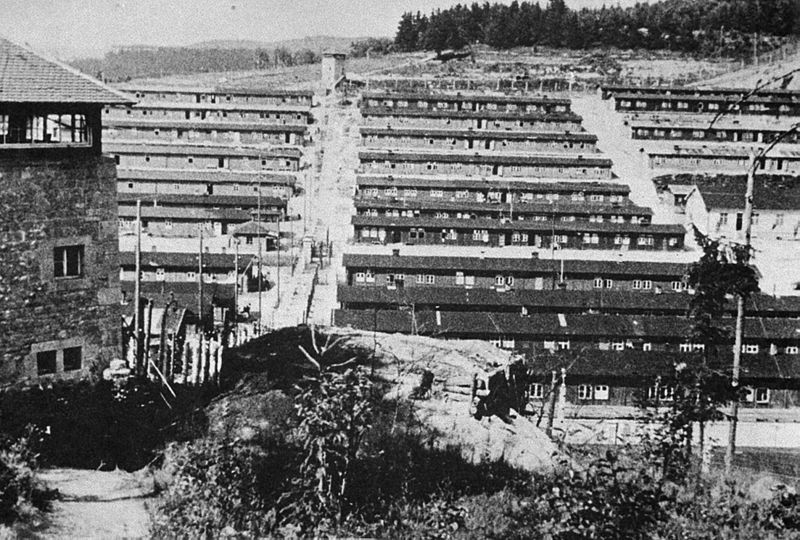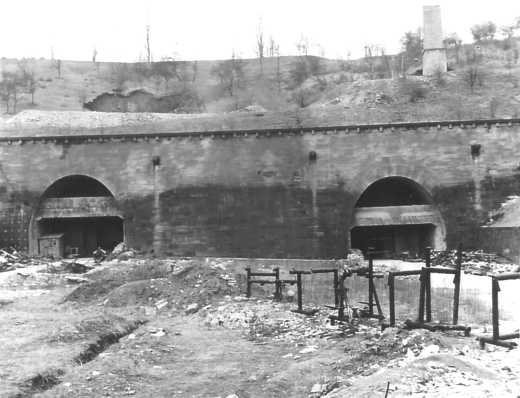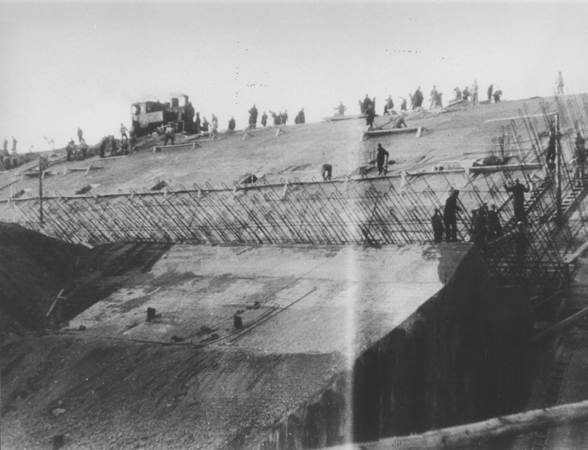The so- called Jägerstab (Fighter Staff) was established in March 1944 to maintain and increase, respectively, the production of fighter aircraft. Its members consisted of representatives from the Armaments and Air Ministries and the armaments manufacturers. One of the goals of the Jägerstab was to establish bombproof production sites. For this purpose, Organisation Todt (OT), part of the Armaments Ministry, was instructed to build semiunderground concrete bunkers with production sites of several hundred thousand square meters. Six bunkers were planned, but construction commenced only on four, and of these, only two were finished (and then only up to two- thirds of capacity). One of the four sites was located in Mühldorf am Inn in Upper Bavaria.
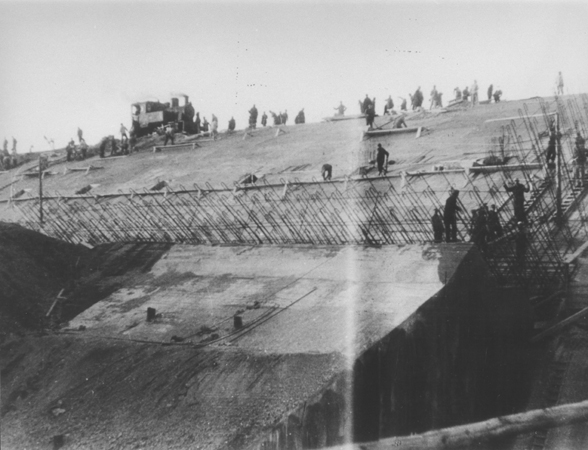
Prisoners constructing Mühldorf camp [Stadtarchiv Muehldorf am Inn]
The work of the prisoners was, above all, construction work. They had to unload the cement that was delivered by trucks or rail wagons, transport it to the ware houses near the building sites, and later carry the 50- kilogram (110- pound) heavy sacks to the concrete mixers, where the cement was poured into the machines. They also had to lay tracks at the building site and provide assistance such as the production of prefabricated concrete parts.
Without exaggeration, the living conditions in the Mühldorf subcamps can be described as catastrophic. The interior of the huts was limited to boards with a layer of straw and a stove. There was a lack of firewood or fuel in winter, and the rain and snow penetrated the roofs of the earth huts. For the concentration camp prisoners, there were no toilets or washing facilities at the construction sites. It was only when a typhoid fever epidemic raged that the OT construction manager ordered the construction of toilets at the building site “Weingut I.” In at least two of the four Mühldorf subcamps, there was no running water. The little water available, which had been brought to the camp in barrels, was to be used only for cooking.
Many prisoners were infected with vermin because of the lack of washing facilities. As a consequence, typhus and typhoid fever spread quickly. An SS doctor from the Dachau concentration camp removed the quarantine restrictions imposed on the forest camp so that work could continue on the construction of the bunkers. The OT was responsible for the medical care at the camps at Mühldorf.
The Mühldorf camps, like the Kaufering camps, were a new type of camp where the SS, other than with respect to guards, had withdrawn from the responsibility for the camps. The type and pace of work, construction of the camp, food, and medical care as well as the selection of the concentration camp prisoners no longer fit for work were the responsibility of the OT.
Toward the end of the war the head of the SS- Reich Security Main Office (RSHA), Kaltenbrunner, devised a plan for the murder of the Jewish prisoners at Kaufering and Mühldorf. It was known by the code name Aktion Wolkenbrand (Action Fire Cloud). Since it could not be implemented, most of the prisoners were evacuated from the Mühldorf camps. One of the evacuation transports was by rail to Poing, county of Ebersberg near Munich. Probably about 200 prisoners were killed or injured, either due to an error by the guards releasing the prisoners too early or perhaps as a result of a low- flying air attack. The remaining prisoners were freed at the end of April 1945 or the beginning of May 1945 in Seeshaupt, Tutzing, and Feldafing am Starnberger See.
Full entry: https://www.ushmm.org/online/camps-ghettos-download/EncyclopediaVol-I_PartB.pdf

